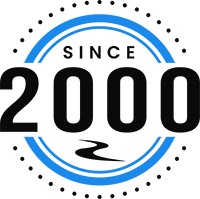With Mobile & Tablet Usage on the Rise, is What Displays “Above the Fold” Less Relevant?
When it comes to website design, some of the old tried and true practices have changed. Not too long ago, the majority of users accessed the Web on desktop computers. Today, more people reach the Internet with tablets and smartphones. Screen sizes vary widely. These changes have led to new web design practices and approaches, such as responsive design and parallax scrolling effects.
The majority of users today are Internet savvy, and scrolling is an intuitive action. In light of this, is the positioning of "above the fold" content as critical as it had been in the past?
The term, "above the fold" was originally a reference used in the newspaper industry to describe bold headlines and page content positioned at the top of a newspaper's front page. Content placed there was designed to grab
Even with changing factors affecting today's approach to web design, one point continues to hold true -- You have only a few initial seconds to capture the attention of a visitor. Within that brief timeframe, it's essential that your strategy is aimed at meeting user expectations. Why??
In determining search engine page results, Google considers a site's bounce rate. This means that if a majority of visitors land on your web page but back out quickly, the search engine deems that website to be of less value and thus, less worthy of sending more visitors.
Secondly, when it comes to identifying what the topic of interest is for a web page, Google gives slightly more weight to wording placed closer to the top.
Making a determination of where in fact "the fold" is, can be tricky. The amount of available real estate can differ among devices and browsers, so that factor should be taken into account too.
With these points in mind, it may not be the best idea to feature only a single large image on a homepage. At the same time, one might assume that cramming as much content as possible "above the fold" could be a good thing. However, you don't want the first impression
Elements occupying above-the-fold space should clearly communicate who the site is for, what is being offered, and how the user can access it or find out more.
Here are a few must-haves to include at the top of your homepage to reinforce identity and enhance the marketing focus:
- Logo
- Slogan
- Navigation menu
- Contact methods
- Headline
Try to include a concise one-liner that describes what the site is, what it does, and who it's for. Calls to action are important too, as your goal is to grab attention and tell the user what to do next. Even if you want the user to scroll, it's advisable to indicate that in some way.
Web design and development go hand-in-hand with content marketing. In order to maximize above-the-fold effectiveness, it can take a team approach. To successfully develop and launch a successful website, an organization must possess a variety of skills. The business model at Brave River Solutions is to provide end-to-end expertise to our clients. Our team consists of website designers, marketing specialists, business analysts, database designers, and application programmers who can apply the necessary skills to assist in your project. Call us today at 401-828-6611.


